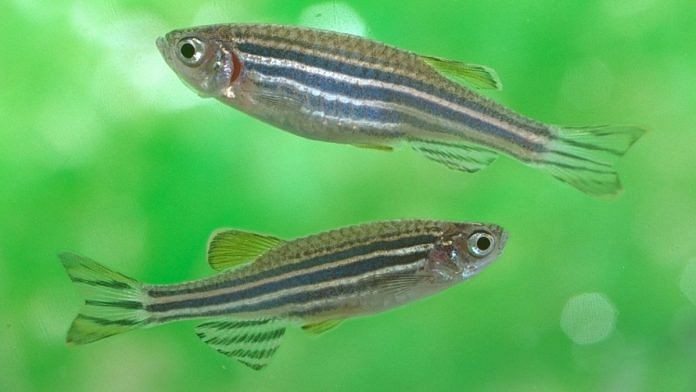New Delhi: After invading the human brain, nanoplastics have now breached another biological frontier—the red blood cells of aquatic life. These microscopic plastics can easily enter the bodies of aquatic animals such as fish, crabs, and shellfish. Once inside, they can accumulate, cause damage to cells, slow the animals’ growth, and disrupt the overall balance of the ecosystem, according to a new study published Monday in the journal Zoological Research.
Scientists have explored the impact of nanoplastics on the cells and tissues of aquatic animals, yet much remains unknown about how they affect organisms at the molecular level. However, this study by researchers at Pusan National University in South Korea is the first of its kind to address this gap by focusing on the interaction of these tiny particles with the cellular system of marine life.
Nanoplastic particles, ranging in size from one nanometre to one micrometre, are small enough to be observed only under a microscope.
In this study, researchers used a special technique called single-cell RNA sequencing, a method to examine individual genes. This helped them study how nanoplastics affect the development of red blood cells in baby zebrafish. Red blood cells are essential for carrying oxygen throughout the body. The simulations were done using computer models and actual testing on living organisms.
“Our research shows that polystyrene nanoparticles can interfere with the normal development of red blood cells in zebrafish embryos. These findings raise important questions about the broader impact of nanoplastic exposure on blood cell formation,” said Yun Hak Kim, associate professor in the department of anatomy at Pusan National University’s School of Medicine and co-author of the study in a statement.
Polystyrene nanoparticles are found in a number of plastic and Styrofoam consumer products such as toys and CDs, and they are also released directly during manufacturing processes that involve plastic usage. A study in 2020 by Polish scientists documented how these nanoparticles have the ability to penetrate organisms through the skin, respiratory, and digestive tracts.
The South Korean study comes at an opportune time, barely a week after Canadian scientists, on 4 March, released a paper that found “alarming rates” of microplastics accumulated in human brain tissue, especially in individuals diagnosed with dementia. They had three to five times higher concentrations of microplastics and nanoplastics than normal individuals, according to the study.
The Pusan researchers tested zebrafish embryos in nanoparticle concentrations (0.1–10 micrograms per millilitre) similar to those found in natural water bodies, suggesting that aquatic organisms may already be experiencing physiological and genetic disruptions.
In zebrafish, nanoplastics trigger the clustering of immune cells, which leads to cell death, resulting in inflammation in the liver. Due to their small size, these particles can easily enter cells and sensitive areas like the brain, disrupting vital functions such as brain activity and overall metabolism in organisms, wrote the researchers in the study. They found that the production of haem, a vital part of red blood cells that carry oxygen, was disrupted, leading to a decline in red blood cells.
There was also a visible change noted in the digestive cells of the zebrafish intestine, proving that the harmful effects of plastics are not just limited to one part of the body. Rather, they affect multiple body functions simultaneously.
“As we learn more about the biological effects of nanoplastics, it becomes essential to rethink plastic waste management and explore safer materials,” said professor Kim in the statement, emphasising the need for stricter regulations on nanoplastics.
The study also highlights the importance of future research into how these particles affect the cells of organisms. Such research is crucial for understanding the long-term impacts of nanoplastics on both environmental and human health, the authors note in the paper.
Sneha Yadav graduated from the first batch of ThePrint School of Journalism.
(Edited by Radifah Kabir)
Also Read: Posture panic hits researchers. IITs, AIIMS, big hospitals use smart microscopes now






